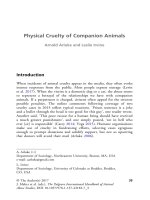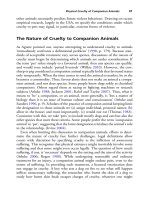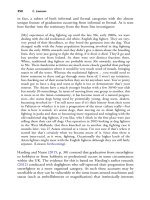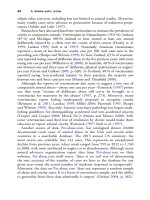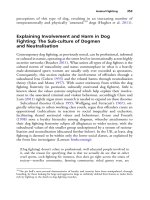The palgrave international handbook of a 186
Bạn đang xem bản rút gọn của tài liệu. Xem và tải ngay bản đầy đủ của tài liệu tại đây (40.17 KB, 1 trang )
Slaughterhouses: The Language of Life,
the Discourse of Death
Nik Taylor and Heather Fraser
Introduction
To some it might sound counterintuitive to include a chapter on animal
slaughter in a book about animal abuse. To others, it will be a welcome
addition. This disjunct reflects the paradoxical ways our society approaches
the slaughter of animals for human food.1 This slaughter happens in numbers
so large as to be almost incomprehensible for the vast numbers of humans who
prefer not to know where their meat comes from, with the foreshortened and
often miserable lives of ‘livestock’ and their likely horrific deaths ignored if not
made entirely invisible. The cultural erasure of the violence to ‘farmed’ and
butchered animals occurs when social systems render such violence normative.
1
Unwanted companion animals are also routinely slaughtered; albeit this is usually referred to euphemistically as euthanasia. While the focus of this chapter is on animals farmed for human food, the
numbers of companion animals killed are substantial. While our relationships with companion animals
are a form of speciesism, it is sobering to note that even the animals that we hold dear and seek to protect
are subject to poor treatment and early death due to human actions. McHugh (2004, p. 9) points out
that ‘the dangers for contemporary dogs are real: destroyed by the millions every year as unwanted pets,
strays and research subjects’.
N. Taylor (*) Á H. Fraser
School of Social and Policy Studies, Flinders University, South Australia,
Australia
e-mail: nik.taylor@flinders.edu.au
© The Author(s) 2017
J. Maher et al. (eds.), The Palgrave International Handbook of Animal
Abuse Studies, DOI 10.1057/978-1-137-43183-7_9
179
